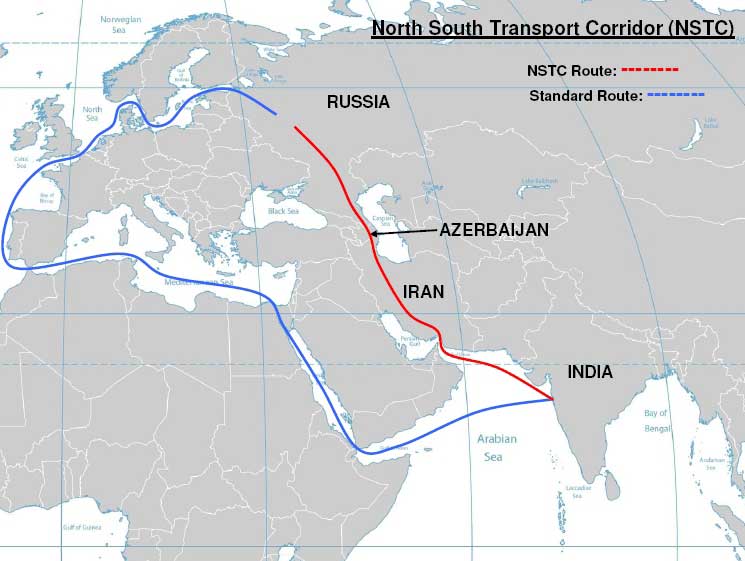Moscow, Tehran, Finally Sign Off On US$1.6 Billion Rasht-Astara INSTC Rail Link
Route will better link freight destinations from Helsinki to Mumbai
Russian President Vladimir Putin and his Iranian counterpart Ebrahim Raisi have taken part in a signing ceremony, held via video link, for an agreement on the construction of a rail line between the Iranian cities of Rasht and Astara, the Kremlin has stated.
The railroad linking the two cities is part of the International North South Transportation Corridor (INSTC), a 7,200-kilometer multi-mode transit system that connects ship, rail, and road routes for moving cargo between India, Iran, Azerbaijan, Russia, Central Asia, and Europe.
The US$1.6 billion contract to build the Rasht-Astara rail line, a project in northern Iran which will serve as a key cargo transit route within the INSTC system, was signed by Russian Transport Minister Vitaly Savelyev and Iranian Minister of Roads and Urban Development Mehrdad Bazrpash. Russia is funding the construction, which will be paid back from Iranian transit fees when the route becomes operational, expected sometime in mid-late 2024.
“The unique North-South transport artery, of which the Rasht-Astara railway will become a part, will help to significantly diversify global traffic flows. Transportation along the new corridor will have significant competitive advantages,” the Russian president said. Putin added that the route will substantially cut travel times and costs, and help develop new logistics chains.
The 162-kilometer railway will connect the city of Rasht, near the Caspian Sea, to Astara on the border with Azerbaijan. Once completed, it will allow the transport of cargo from as distant as Helsinki to Central Asia, south to the Persian Gulf, and onwards to markets in Africa and South Asia.

Skeptics should note that the first Helsinki-Mumbai direct container train arrived in Mumbai in August 2021. The new connection will shave four days off that travelling timeframe.
Putin also noted that the new rail section will make a tangible contribution to ensuring global food security. “The new INSTC route is intended to be used, among other things, for the transportation of food and other products of the agro-industrial complex, which will be intended both for consumers in Iran and for the countries of the Persian Gulf and Africa,” the Russian president explained.
Analysts have said the North-South corridor will become a safer and less expensive alternative to the Suez Canal to protect trade flows from geopolitical fallout. Existing transport infrastructure has been historically focused on the East-West connection, but new routes are gaining prominence due to global shifts in world markets towards China, South-East Asia and the Persian Gulf.
The construction of the INSTC began in the early 2000s, but efforts to develop it have intensified in light of Western sanctions, targeting both Russia and Iran. The restrictions have forced Moscow to shift its trade flows from Europe to Asia, Africa and the Middle East, a major driver in Russia’s provision of finance.
Related Reading





